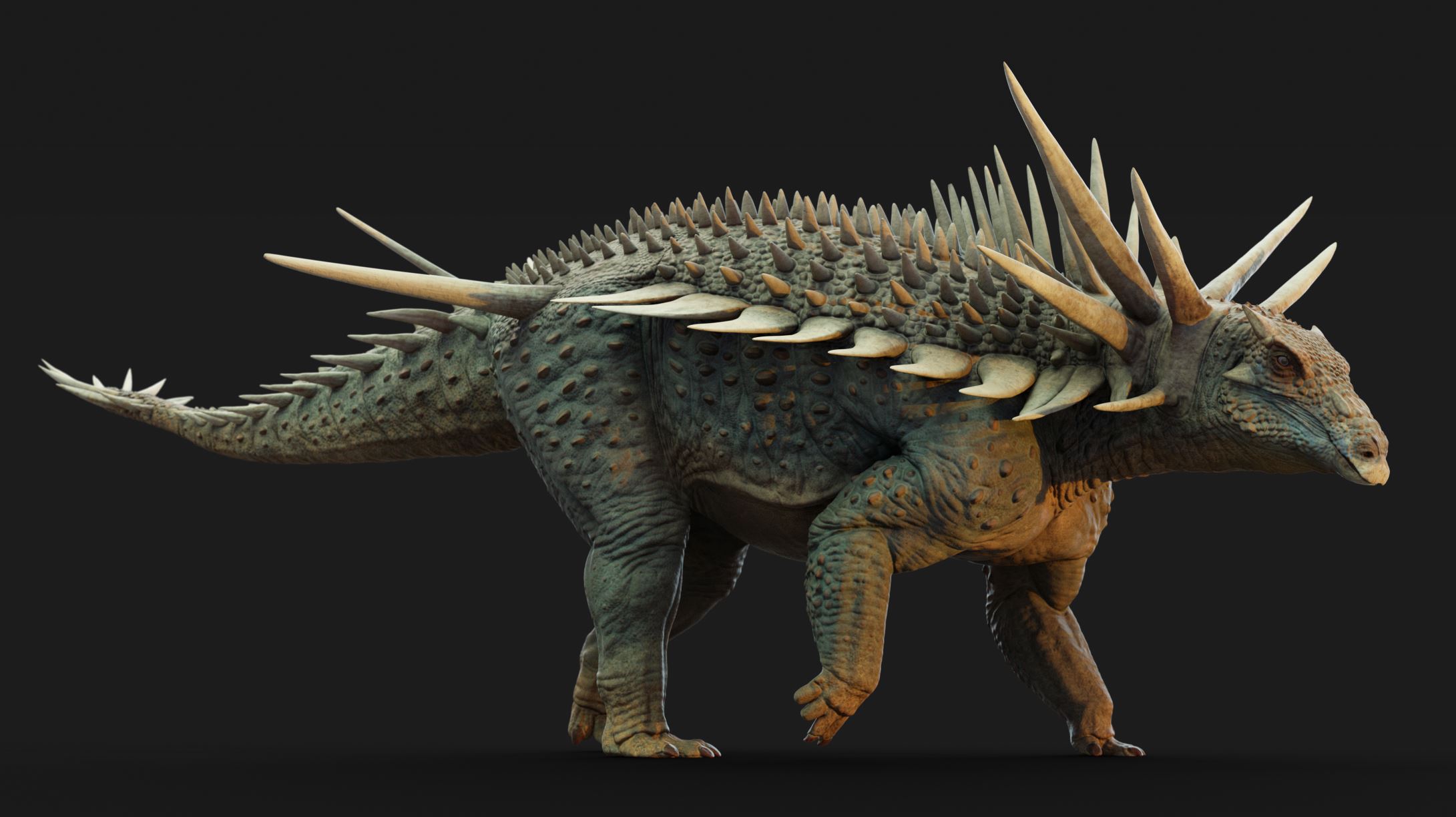Media release
From:
Palaeontology: Extreme armour in the oldest known ankylosaur
The earliest known ankylosaurs had uniquely elaborate body armour, including a spiky ornament on their tail, research in Nature reveals. These extreme armour features are unlike those of any other vertebrate, including other ankylosaurs later in their evolutionary history. Analyses of fossils from the Middle Jurassic of Morocco, dating to around 165 million years ago, offer new insights into the evolution of tail weapons and armour in ankylosaurs.
Ankylosaurs are a group of armoured dinosaurs mostly known from the Cretaceous (143–66 million years ago) of North America and Asia. Their early evolution, in the Middle Jurassic (around 175–162 million years ago), is unclear owing to a poor fossil record for this period. A Middle Jurassic fossil from Morocco was reported to be the oldest known ankylosaur, named Spicomellus afer, but the specimen was only a partial rib, meaning it was difficult to determine the body plan of early ankylosaurs.
A new partial skeleton of Spicomellus, found in the same rocks in the Atlas Mountains of Morocco as the original specimen, is described by Susannah Maidment and colleagues. The new specimen confirms ankylosaurian affinities and reveals elaborate dermal armour. The skeleton includes six ribs with spikes attached to their top surfaces, a bony collar with plates and two pairs of spikes (one almost complete spike measures 87 cm long), and a pelvic shield with long and short spikes. Distinctive bones in the tail are indicative of a tail weapon.
Maidment and colleagues suggest that the features seen in Spicomellus may have been both for display as well as defence. Later ankylosaurs had simpler, less extravagant body armour, which might suggest a shift towards a primarily defensive function, the authors propose. Finally, the evidence for a tail weapon in this specimen indicates that adaptations for tail weaponry evolved around 30 million years earlier than previously thought, the authors conclude.



 International
International


